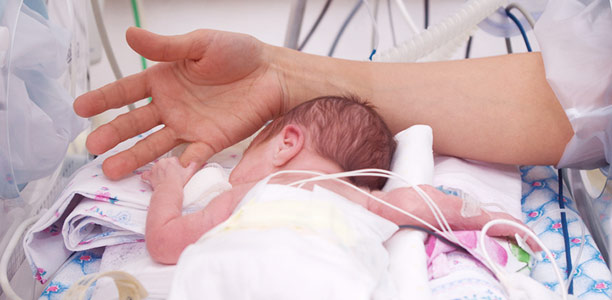In Australia, decisions regarding perinatal care, including neonatal care unit admission, play a greater role in the survival of infants born at 23 weeks gestation than at 24 or 25 weeks, Flinders University researchers say.
Babies born in Australia at 23 weeks gestation are managed differently to those at 24 and 25 weeks gestation, the study by Flinders paediatric researchers Dr Scott Morris and Dr Kerryn Atwell and colleagues at James Cook University says.
“At 23 weeks, the proportion of all births that are stillborn is about double that at 25 weeks, and the proportion of live-born babies resuscitated and admitted to the neonatal intensive care unit (NICU) at 23 weeks is about half that at 24 and 25 weeks,” they find in a new research paper just published in US journal Pediatrics.
“However, at the end of the day, NICU-admitted babies (at 23 weeks) represent only 15% of all births and 40% of live births, compared to 50%-60% of all births and 80%-90% of live births at 24 and 25 weeks gestation,” says Flinders graduate Dr Kerryn Atwell, who is currently a visiting medical officer at the Royal Hobart Hospital.
Several disparities are revealed in the analysis of clinical characteristics of all Australian births and NICU admissions from 2010 to 2013 at 23, 24, and 25 weeks gestation.
The researchers note that NICU admission occurred in 15% of all births at 23 weeks; in contrast, 49% of infants were admitted to the NICU at 24 weeks, and 64% at 25 weeks.
At 23 weeks, only13% of live-born infants weighing less than 500 grams were admitted to a NICU compared with 43% of those who weighed more than 500g.
Further, a lower proportion of live-born boys were admitted to a NICU at 23 weeks (33%) compared with girls (43%).
Yet, at 24 and 25 weeks, birth weight (including a birth weight of less than 500g) and sex had little or no impact on NICU admission.
In addition, only 8% of live births were by caesarean delivery at 23 weeks compared with 33% at 24 weeks and 48% at 25 weeks gestation.
“The reasons for (these differences) are not clear from the data, but may indicate a more conservative medical approach to management at 23 weeks,” says Flinders College of Medicine and Public Health senior lecturer Dr Morris.
“We need to accept that for birth at 23 weeks gestation, there is less certainty in currently published outcome data when compared to 24 and 25 weeks gestation.
“This is important when counselling parents or developing guidelines for management of 23-week gestation babies.”
This paper contributes to the important discussion of management of babies born at the margin of viability, where risks of death and long-term serious disability are significant, the researchers concludes.
In a related journal editorial, Dr John D. Lantos, of Children’s Mercy Hospital in Kansas City, Missouri, says: “Most of what we think we know about survival rates for infants born at 22 or 23 weeks gestational age is probably wrong.”
“Studies that only look at mortality after live birth are flawed because obstetrical decisions and foetal interventions now have a big impact on the number of foetuses that survive in the womb until birth,” he adds.
“Instead of only studying babies who are born alive, we should study all foetuses who are alive at 20 weeks of gestation.
“As a simple example, if a woman is in labour at 23 weeks, and there are signs of foetal distress, doctors can either induce early birth or not induce. If they don’t induce, the foetus might die. It will not be born alive, and therefore won’t be counted in infant mortality statistics.
“Infant mortality rates among babies who are born alive will likely appear higher because the foetus-in-distress died in utero and therefore didn’t ‘count’ or ‘get counted,’ ” Dr Lantos explains.
“But, these researchers say, it is just as bad an outcome from the perspective of the parents.
“Their baby died. Those deaths shouldn’t disappear from the statistics.
“This is not my idea,” he notes. “It has been proposed by a number of other researchers, including authors of a recent paper on the ‘foetuses-at-risk approach.’”
Dr Atwell, who studied medicine at Flinders University – including a clinical school placement in Darwin with Flinders NT – has a dual RACP fellowship in general paediatrics and neonatology.
‘Selection Bias and Outcomes for Preterm Neonates,’ by Kerryn Atwell, Emily Callander, Daniel Lindsay, Peter B Marshall, and Scott A Morris from Flinders University, Flinders Medical Centre and James Cook University (June 2018), has been published in the American Academy of Pediatrics journal Pediatrics.
(Source: Flinders University, Pediatrics)










